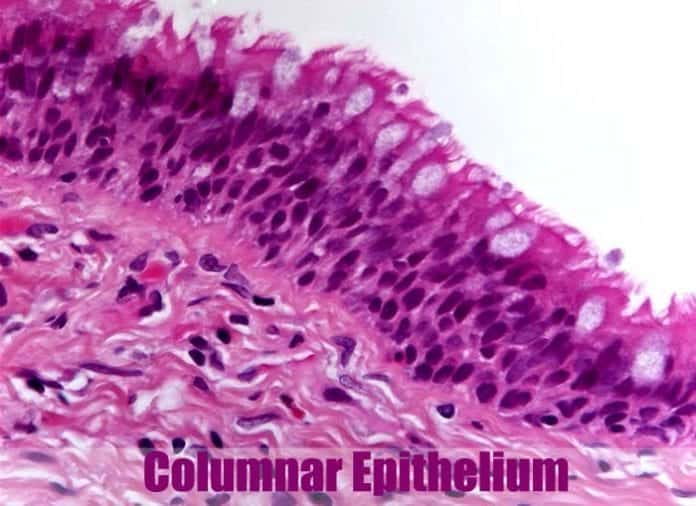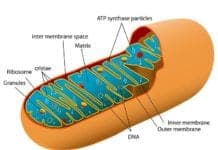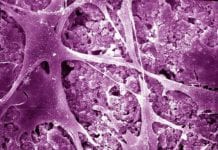The epithelium[1] , the outermost layer of the body surface, consists of a layer (or layers) of similar cells that are bound tightly together. Found in the epidermis
Aside from that, the epithelium controls the entry or exit of materials across the physical barrier. In the human body, per se, there are already different kinds of epithelium which are very specific for the function they serve and location they are in.
To be specific, various epithelia are classified according to the shape of cells and the number of cell layers that make them up.
In this article, you will get to learn about a (somewhat) confusing yet exciting kind of epithelium: the pseudostratified columnar epithelium .
You will also learn that the epithelia are not just physical barriers but can also be specific and perform functions you could never have imagined.
Anatomy of the Pseudostratified Columnar Epithelium The term “pseudostratified[2] ” refers to the kind of epithelium characterized by “falsely ” stratified (arranged into layers) single layer of cells that are attached to the underlying basement membrane.
But when observed precisely, only some of the cells in the epithelium reach the free surface; others do not even reach up to face the lumen. Aside from that, these cells are tightly packed with their nuclei being forced to appear so dense, hence look like layers.
Diagrammatic Illustration Of The Pseudostratified Columnar Epithelium (Source: dartmouth.edu ) The diagram above illustrates a pseudostratified epithelium. In terms of shape, the cells are variously shaped, but most of them are taller than wide (as implied by their name, columnar) and are shown to appear like miniature pillars.
NOTE : If a specimen appears to have layers, but there are cilia, it is, therefore, a pseudostratified columnar ciliated epithelium since other stratified epithelia bear no cilia at all.
Functions of the Pseudostratified Columnar Epithelium The pseudostratified columnar epithelium is found in different body parts, and each specific location serves different functions. Listed below are some of them.
1. Secretion of Mucus To be specific, the main function of columnar epithelial cells[3] is the secretion of mucus. This function is served by cells known as goblet cells
The mucus is a substance composed of different ions and macromolecules dissolved in water, known to have antimicrobial and antioxidant properties. In some locations, this kind of epithelium has combined secretory and absorptive functions (i.e., in the epididymis and vas deferens). Consequently, mucus secretion is extremely rapid and happens in just a fraction of a second.
2. Protection This type of epithelium in regions that need to secrete mucus to help trap foreign materials and propel them away using a modified cytoplasmic cilia .
To be specific, this type of epithelium is found mostly in the upper respiratory tract, whose main function is to exchange gas by bringing air in contact with the flowing blood. The pseudostratified columnar epithelium then serves as the first line of defense against particles, preventing them from further traveling into the lower respiratory tract.
3. Propulsion of Sperm This type of epithelium is also present in the vas deferens[4] and serves to aid in the propelling of the sperm
Stereocilia (will be discussed further below) present in the pseudostratified layer aids in the increase of the surface area of the epididymis by absorbing the excess fluid and therefore adds pressure in flushing the sperm out of the male’s body.
Pseudostratified Ciliated Columnar Epithelium Video
Types of Pseudostratified Columnar Epithelium Basically, there are two major kinds of pseudostratified columnar epithelium: ciliated and non-ciliated . While both of them serve the functions mentioned earlier, each of them is differentiated as well.
1. Ciliated Pseudostratified Columnar Epithelium The most common types of pseudostratified epithelia occur as ciliated types. The presence of cilia in epithelial cells is a kind of specialization
[5] that gives the cells the ability to propel mucus along the surface. The resulting movement is referred to as the “
ciliary escalator[6] “.
This kind of pseudostratified columnar epithelium is found mostly in the upper respiratory tract (trachea). Shown right is a histological slide of ciliated pseudostratified epithelium in the trachea. In that slide, the cilia are visible at the apical layer of the cell.
2. Non-Ciliated Pseudostratified Columnar Epithelium A special feature of this kind of pseudostratified columnar epithelium is its absence of cilia but the presence of other cytoplasmic projection known as the stereocilia. Electron micrographs reveal that these structures lack the structural components of the cilia itself; hence they are classified as different structures.
These long branching microvilli serve to increase the surface area of the cells lining the different tubules in the body by absorbing the excess liquids from the inner membrane. This epithelium is found in the membranous part of the male reproductive tract (vas deferens and epididymis). Shown above is a histological slide of the epithelium in the vas deferens (stereocilia is not that visible).
Various studies have already been performed (and continuously being shown) to increase our understanding of the human epithelia, which in the broader sense can provide new insights that could improve human health as well.
This article just showcased that the pseudostratified columnar epithelium, despite its varying forms, plays a vital role in many physiological functions.
For one, the pseudostratified columnar epithelium is an amazingly complex epithelium that serves many functions.
Are you familiar with other epithelia? Can you tell where they are located and what purposes they serve?
Cite This Page
Images are from Wikipedia under creative commons licenses. [1] – “Generalized Functions of Epithelial Tissue” . Accessed April 04, 2017. Link .[2] – “Description” . Accessed April 04, 2017. Link .[3] – “What Are the Functions of Columnar Epithelial Cells? | LIVESTRONG.COM” . Accessed April 04, 2017. Link .[4] – “Pseudostratified Columnar Epithelium – Definition and Function | Biology Dictionary” . Accessed April 04, 2017. Link .[5] – “Pseudostratified Columnar Epithelial Tissue” . Accessed April 04, 2017. Link .[6] – “simple epithelia” . Accessed April 04, 2017. Link .























